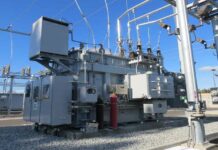The Future of the Construction World: New Technologies in Action
Construction processes are being transformed by innovative technologies which are driving the industry forward at an extraordinary speed. Construction projects benefit from increased speed and safety alongside improved environmental sustainability through robotic builders and 3D printing marvels. This article explores how new technologies are transforming construction processes by detailing the key advancements that redefine structure design, construction, and maintenance.
Transforming Building Sites with Robotic Innovations
The Rise of Automated Builders
Robotics now occupies a leading position in today’s construction technology landscape. Construction site robots operate continuously without any breaks while achieving superior precision for every task they perform. Robots complete tasks such as brick laying and concrete pouring while cutting materials to precise specifications which guarantees all construction projects achieve top-tier accuracy and uniformity.
These automated builders serve as portable mini-factories that enable direct on-site assembly of structural components. The machines’ capacity to operate without interruption speeds up project completion times while simultaneously solving workforce shortages making them essential to contemporary construction practices. Construction workflows powered by integrated new technologies open endless possibilities for innovation.
Enhanced Precision and Safety
The introduction of robotic systems into construction work represents a fundamental move towards better operational efficiency and safer work environments. Robots execute dangerous tasks that could threaten human workers and enhance site safety by reducing accidents. The precision of these systems enables building components to be installed exactly as planned which reduces both errors and the need for rework.
Robotics and other new technologies now serve as essential elements of the construction industry. Through their implementation traditional methods will undergo redefinition leading to a new era characterized by essential safety and precision standards.
3D Printing: A Game-Changer in Modern Construction
Printing Structures Layer by Layer
3D printing stands as one of the most thrilling new technologies which is revolutionizing the construction industry. The innovative method creates structures by depositing layers of materials like concrete and composite polymers. The combination of quick production speeds alongside the cost-saving measures and minimal waste output from 3D printing establishes this technology as a practical substitute for conventional construction approaches.
Visualize a future where entire buildings emerge fully formed on their construction sites using very little human work. The futuristic construction method delivers projects more quickly while lowering the environmental impact of building processes. The construction industry uses new technologies like 3D printing to create cost-effective sustainable housing solutions that can be implemented quickly.
Advantages Over Traditional Methods
3D printing offers multiple advantages that surpass the simple advantage of increased speed. This method enables the creation of complex designs which conventional construction methods cannot achieve. The ability to experiment with innovative forms and structures allows architects and builders to explore new design possibilities in construction.
The accurate nature of 3D printing greatly reduces material waste which matches the increasing need for sustainable construction practices. The construction industry benefits from new technologies that deliver tools which enhance building processes while promoting environmental responsibility.
Aerial Views and Inspections with Drone Technology
Drones: Drones serve as a revolutionary aerial observation tool transforming the construction industry
In recent times drones have become an essential new technological tool in the construction industry. Project managers benefit from these agile devices which deliver unique aerial viewpoints that enable continuous progress monitoring and hard-to-access area inspections while helping to identify potential issues early before they escalate.
Drones enable site inspections and surveys to become more efficient through their ability to capture high-resolution images and video footage in real time. This new technology improves safety and cuts costs while saving time by removing workers from dangerous climbs and hazardous locations. Construction efficiency and data capabilities have improved through the use of innovative technologies including drones.
Enhancing Efficiency and Reducing Costs
Drones deliver comprehensive site views while improving project management through accurate mapping and detailed visual documentation. By rapidly obtaining detailed site information drones enable effective planning and construction schedule optimization. Drone surveillance represents a new technology that transforms construction management through its ability to maintain schedule adherence and budget compliance.
Smart Devices and IoT: The Brain of the Construction World
Integrating IoT for Enhanced Connectivity
Smart devices operating through the Internet of Things (IoT) represent groundbreaking technology that transforms the construction industry. Connected devices and sensors are currently used to monitor construction site operations including equipment tracking and worker safety which helps maintain synchronized operations.
Through the use of smart helmets and wearable devices alongside interconnected sensors, construction sites can track environmental conditions while monitoring worker health and machinery performance. Through real-time alerts about potential dangers these technologies prevent accidents which ensures safer work conditions. Construction industries today depend more on emerging technologies that use IoT systems to boost connectivity and increase operational efficiency.
Data-Driven Construction Management
IoT device data collection is revolutionizing how decisions are made within the construction industry. Through real-time analytics managers can predict maintenance requirements while they improve resource distribution and project planning. The integration of IoT-powered new technologies has become essential for modern construction projects due to their ability to boost productivity while minimizing downtime.
Electric Machines and Dust Control Together Drive Green Construction Initiatives
Quiet, Clean, and Efficient Equipment
Traditional construction equipment produces high noise levels and environmental pollution. The introduction of electric machines stands as a transformative technology currently reshaping how construction projects operate. Electric-powered construction equipment like diggers and cranes operate with reduced noise levels and higher energy efficiency while eliminating on-site emissions. Urban construction projects require these innovations because noise and pollution represent crucial challenges.
Cities worldwide are adopting electric machines in construction because they help create eco-friendly and sustainable building sites. The implementation of new technologies that support cleaner operations benefits the environment while simultaneously improving quality of life in densely populated communities.
Advanced Dust Suppression Methods
Construction projects produce large quantities of dust creating both health hazards and environmental problems. New technology innovations such as modern dust suppression systems solve dust-related problems through the application of fine water mists which capture airborne particles. Protective systems function as barriers that maintain a clean and secure construction environment for both workers and surrounding communities.
Construction builders who use dust suppression technologies create healthier work environments and meet stringent environmental requirements. New technologies continue to advance both the efficiency and sustainability of construction projects through innovative methods.
Artificial Intelligence and Digital Modeling: Smarter Planning in the Construction World
AI-Powered Decision Making
The construction industry now recognizes Artificial Intelligence (AI) as a rapidly developing essential technology. Construction managers can plan projects with improved efficiency using AI-driven software applications because these tools forecast possible delays while streamlining material usage and uncovering potential cost reductions. Construction managers who use AI systems can make better decisions which lowers the chance of expensive mistakes occurring.
Through predictive analysis AI enables proactive resolutions to potential problems which prevents complications from becoming severe. The construction industry remains at the forefront of new technological integration while AI serves as a transformative force that optimizes operations and improves project results.
Digital Blueprints with Building Information Modeling (BIM)
Building Information Modeling (BIM) represents a groundbreaking technological advancement that transforms construction industry standards. Building Information Modeling (BIM) generates comprehensive digital blueprints which serve as 3D models that include every aspect of building design. Building Information Modeling (BIM) helps teams plan every aspect of construction projects from plumbing to structural supports and identify any errors before work begins.
The advantages of BIM are immense. BIM reduces errors while cutting costs and guarantees full alignment of all construction components before the start of building. Despite advances in technology BIM still leads the field enabling architects and builders to realize their concepts through precise execution.
Enhancing Worker Safety with Wearable Technology
Smart Wearables in the Construction World
Worker protection stands as the top priority in construction and emerging technologies serve as essential tools to achieve this objective. Smart vests and helmets with sensors serve as wearable technology that tracks workers’ vital signs and environmental parameters in real-time. The technology in these devices warns workers about potential dangers which enables them to prevent dangerous situations from happening.
The convergence of wearable technology with construction practices marks a substantial advancement in managing safety standards. The implementation of new technologies that monitor conditions and provide immediate feedback helps protect workers while decreasing accident risks at work sites.
Real-World Impact on Safety Practices
Wearable technology serves multiple purposes beyond mere monitoring activities. Smart devices on construction sites improve communication capabilities and emergency response procedures. Construction projects benefit from new technologies such as wearable safety gear which transforms project management and generates safer and more adaptive work sites.
Building Tomorrow with Modular Construction and Autonomous Machines
The Efficiency of Modular Construction
New technological advances are accelerating modular construction adoption in the construction industry by enabling buildings to be assembled like large-scale puzzles. Modules made in factories are put together on job sites which results in faster construction and lower waste and costs. By implementing this technique we achieve faster building completion while precision manufacturing improves overall quality control.
The construction industry is experiencing a transformation through a modular approach supported by new technologies that enhance project efficiency and scalability. This approach serves as a contemporary answer to the expanding need for quick yet sustainable building practices.
Self-Driving Machines: The Next Workforce
One of the most advanced technologies changing the construction industry is the use of self-driving machinery. Construction sites now host autonomous bulldozers and diggers which operate through their advanced GPS and sensor systems. The machines operate nonstop while performing tasks with flawless precision which decreases the requirement for human workers.
Autonomous construction machines lead to increased productivity levels and boost safety through reduction of human mistakes. Emerging technologies propel the advancement of these autonomous systems toward standardization in modern construction practices.
Conclusion: Embracing New Technologies in the Construction World
The construction world stands at the brink of transformation because new technologies form its core. The construction industry is undergoing a transformation because of breakthrough technologies like robotics and 3D printing as well as AI-powered smart devices and autonomous machinery. These technologies enable quicker construction projects that operate more efficiently and sustainably while also delivering enhanced precision and improved safety.
Modern technologies are reshaping building practices beyond temporary trends and establishing new core methods for construction. The ongoing development of these innovations will solve persistent industry problems while keeping construction modern and environmentally responsible. Acceptance of current technological developments plays a crucial role in creating a superior future.




























